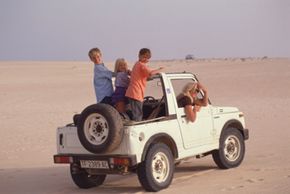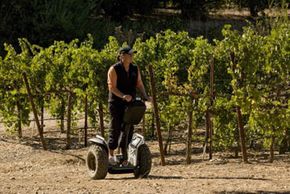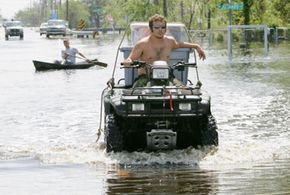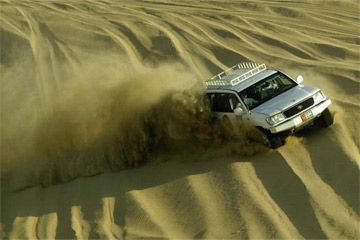All-terrain vehicles (ATV) are compact, powerful and rugged machines that can handle a variety of jobs. You'll find them doing hard work on a farm or ranch, providing hours of enjoyment on riding trails or even tearing up motocross tracks in professional racing series. They vary in size and power, from models suitable for younger riders to powerful ATVs with 800 or more cc (cubic centimeters) of engine displacement.
Almost all ATVs are intended for use on non-paved terrain: dirt trails, snowy and gravelly roads, open fields or muddy paths. So technically, they aren't meant for "all" kinds of terrain. In fact, their high centers of gravity and knobby rubber tires actually make them quite unsafe to drive on paved surfaces. For this reason, many manufacturers now refer to their ATVs as "off-road" vehicles, even though there's no real distinction between a so-called off-road ATV and most other ATVs. There are also vehicles known as UTVs (utility terrain vehicles), which are larger and slower than ATVs, have large cargo areas and two side-by-side seats. These are meant mainly for work rather than racing or riding for fun.
Advertisement
Right now, however, we're going to look at ATVs from top to bottom to learn how they work.





